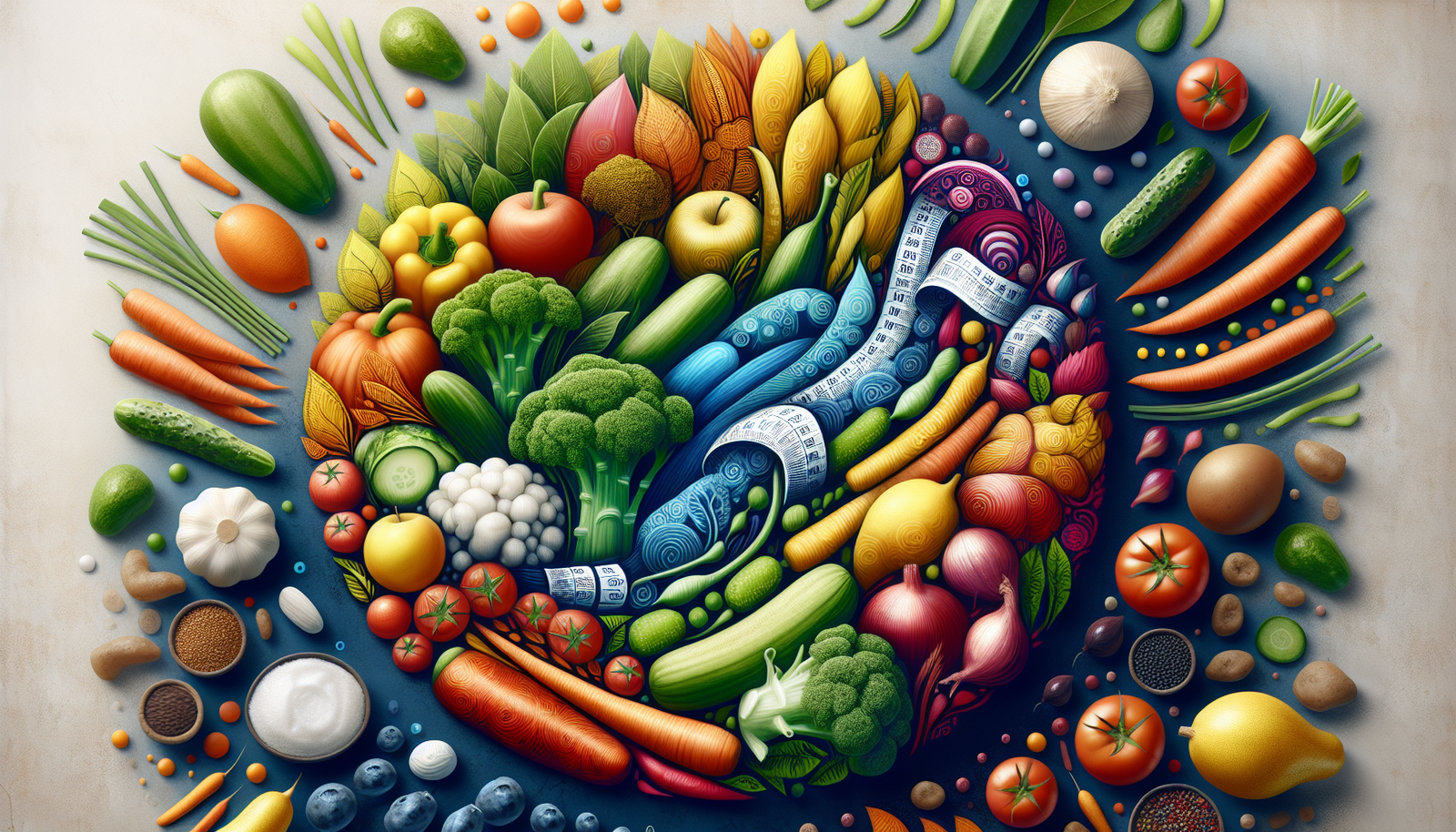Are you looking for natural ways to manage your blood sugar levels? Look no further than the power of vegetables! In this article, you will discover how incorporating certain vegetables into your diet can help regulate your blood sugar, making it easier to maintain a healthy balance. From leafy greens to colorful peppers, these nutrient-packed wonders not only add flavor and variety to your meals but also provide numerous health benefits that can support your overall well-being. Say goodbye to blood sugar spikes and hello to a delicious journey towards better health!
Understanding Blood Sugar
The Role of Blood Sugar in the Body
Understanding the role of blood sugar is crucial when it comes to managing diabetes. Blood sugar, also known as blood glucose, is the main source of energy for our bodies. It is a type of sugar that is found in the bloodstream and comes from the food we eat. When we eat carbohydrates, they are broken down into glucose, which is then absorbed into the bloodstream.
The body needs to maintain a relatively stable blood sugar level throughout the day to function properly. Insulin, a hormone produced by the pancreas, plays a crucial role in regulating blood sugar levels. It allows glucose to enter the cells of the body, where it is used for energy.
Factors Affecting Blood Sugar Levels
Several factors can affect blood sugar levels, including diet, physical activity, stress, medications, and hormonal changes. It is important to pay attention to these factors and make appropriate adjustments to keep blood sugar levels within a healthy range.
Importance of Managing Blood Sugar
Preventing High Blood Sugar
High blood sugar, also known as hyperglycemia, can have serious health consequences if left uncontrolled. It can lead to symptoms such as increased thirst, frequent urination, fatigue, blurred vision, and slow-healing wounds. Long-term hyperglycemia can damage vital organs like the heart, kidneys, and eyes.
Managing blood sugar levels through a combination of dietary changes, medication, and regular exercise is crucial to prevent high blood sugar. Vegetables can play a significant role in controlling blood sugar levels.
Avoiding Low Blood Sugar
On the other end of the spectrum is low blood sugar, known as hypoglycemia. This occurs when blood sugar levels drop too low, often as a result of taking too much medication or skipping meals. Symptoms of hypoglycemia include shakiness, dizziness, confusion, irritability, and even fainting.
To avoid low blood sugar, it is essential to eat regular meals and snacks, especially ones that contain a good balance of carbohydrates, proteins, and healthy fats. Including vegetables in your meals can help stabilize blood sugar levels and prevent hypoglycemia.

Incorporating Vegetables into a Diabetic Diet
Choosing the Right Vegetables
When incorporating vegetables into a diabetic diet, it is important to choose the right ones. Opt for vegetables that are low in carbohydrates and have a low glycemic index (GI). Low GI vegetables release glucose more slowly into the bloodstream, preventing blood sugar spikes. Some examples of low GI vegetables include leafy greens, broccoli, cauliflower, and bell peppers.
Portion Control
While vegetables are generally considered healthy, it is still important to practice portion control, especially if you are watching your blood sugar levels. Even though vegetables are lower in carbohydrates compared to other food groups, consuming large quantities can still impact blood sugar levels. It is recommended to have about 1-2 cups of non-starchy vegetables per meal. Non-starchy vegetables include leafy greens, cucumber, zucchini, and asparagus.
Vegetables That Help Regulate Blood Sugar
Leafy Green Vegetables
Leafy greens, such as spinach, kale, and Swiss chard, are excellent choices for regulating blood sugar levels. They are low in carbohydrates and high in fiber, which helps slow down the absorption of glucose into the bloodstream. These vegetables are also rich in essential vitamins and minerals, making them a nutritious addition to any meal.
Cruciferous Vegetables
Cruciferous vegetables, like broccoli, cauliflower, and Brussels sprouts, are packed with nutrients and have a low GI. They are also high in fiber and contain compounds that have been shown to improve insulin sensitivity and reduce the risk of developing type 2 diabetes. Adding cruciferous vegetables to your meals can help maintain stable blood sugar levels.
Root Vegetables
Root vegetables, such as carrots, beets, and sweet potatoes, can also be included in a diabetic diet. While they are slightly higher in carbohydrates compared to leafy greens and cruciferous vegetables, they still provide essential nutrients and can be enjoyed in moderation. It is important to be mindful of portion sizes and monitor blood sugar levels when consuming root vegetables.

High Fiber Vegetables for Blood Sugar Management
Benefits of High Fiber Foods
High fiber foods, including vegetables, play a crucial role in blood sugar management. Fiber slows down the digestion of carbohydrates, resulting in a more gradual release of glucose into the bloodstream. This helps prevent blood sugar spikes and promotes a steady energy supply throughout the day. Additionally, high fiber foods can improve satiety, promoting feelings of fullness and reducing the temptation to overeat.
Best High Fiber Vegetables to Include
When it comes to high fiber vegetables, there are several excellent options to include in your meals. Artichokes, Brussels sprouts, broccoli, and green peas are all rich in fiber and can help regulate blood sugar levels. These vegetables can be enjoyed in salads, stir-fries, or as side dishes to add a healthy dose of fiber to your diet.
Low Glycemic Index Vegetables
Understanding Glycemic Index
The glycemic index (GI) is a numerical ranking system that measures how quickly carbohydrates in foods raise blood sugar levels compared to pure glucose. Foods with a high GI, such as white bread and sugary drinks, cause a rapid rise in blood sugar levels. In contrast, foods with a low GI, like most vegetables, release glucose more slowly into the bloodstream, promoting stable blood sugar levels.
Low GI Vegetables for Stable Blood Sugar
Including low GI vegetables in your diet is beneficial for maintaining stable blood sugar levels. Some examples of low GI vegetables include leafy greens, broccoli, cucumbers, asparagus, and bell peppers. These vegetables can be enjoyed in various ways, from salads to vegetable stir-fries, ensuring you have a diverse and delicious range of options to choose from.

Preparing Vegetables for Maximum Nutrition
Cooking Methods that Preserve Nutrients
To maximize the nutritional benefits of vegetables, it is important to choose cooking methods that preserve their nutrients. Steaming, sautéing, and roasting vegetables are excellent options as they retain most of their vitamins and minerals. Boiling vegetables for prolonged periods can cause nutrient loss, so it is best to use minimal water and avoid overcooking.
Combining Vegetables with Protein and Healthy Fats
When preparing meals, it is crucial to include a balance of carbohydrates, protein, and healthy fats to manage blood sugar levels effectively. Pairing vegetables with a lean source of protein, such as grilled chicken or fish, helps slow down the absorption of glucose, preventing blood sugar spikes. Adding a small amount of healthy fats, like avocado or olive oil, further enhances satiety and helps regulate blood sugar levels.
Managing Blood Sugar with Vegetable Snacks
Healthy Vegetable Snack Ideas
Snacking on vegetables is an excellent way to manage blood sugar levels between meals. They are low in calories and high in fiber, providing a satisfying snack that won’t cause a significant increase in blood sugar. Some healthy vegetable snack ideas include carrot sticks with hummus, cucumber slices with yogurt dip, or roasted chickpeas.
Avoiding Added Sugars and Unhealthy Fats
It is important to choose vegetable snacks that are free from added sugars and unhealthy fats. Many store-bought vegetable snacks, such as vegetable chips or veggie straws, may contain added sugars, sodium, or unhealthy oils. Opt for fresh, whole vegetables or homemade vegetable-based snacks to ensure you are fueling your body with the nutrients it needs without any unwanted additives.

Including Vegetables in Everyday Meals
Vegetable-Based Breakfast Ideas
Starting your day with a vegetable-packed breakfast can provide a steady source of energy and set the tone for stable blood sugar levels throughout the day. Consider options such as a veggie omelet with spinach and bell peppers, a breakfast salad with mixed greens and avocado, or a green smoothie made with kale, cucumber, and berries. These breakfast ideas offer a balance of nutrients and a delicious way to incorporate vegetables into your morning routine.
Lunch and Dinner Recipes with Vegetables
For lunch and dinner, there are endless possibilities to include vegetables in your meals. Consider making a colorful salad with mixed greens, cherry tomatoes, and grilled chicken. Stir-fried vegetables with tofu, served over brown rice or quinoa, also make for a satisfying and nourishing meal. You can also get creative by making vegetable-based pasta dishes using zucchini noodles or cauliflower rice.
Staying Consistent and Monitoring Progress
Creating a Meal Plan
To effectively manage blood sugar levels with vegetables, it is beneficial to create a meal plan that incorporates a variety of vegetables into your daily meals and snacks. Plan ahead by selecting recipes that include a range of low GI and high fiber vegetables. Additionally, ensure your meals have a good balance of carbohydrates, proteins, and healthy fats to promote stable blood sugar levels.
Regular Blood Sugar Monitoring
Lastly, it is crucial to monitor your blood sugar levels regularly to ensure you are maintaining stable levels. Keep track of your progress and make any necessary adjustments to your meal plan or medication regimen in consultation with your healthcare provider. Regular blood sugar monitoring empowers you to make informed choices and take control of your diabetes management.
Incorporating vegetables into your diabetic diet can play a significant role in managing blood sugar levels. From choosing the right vegetables to preparing them in a nutritious way, and incorporating them into everyday meals, vegetables provide a powerhouse of nutrients and low glycemic options. By staying consistent and monitoring your progress, you can successfully manage your blood sugar levels with the help of these healthy and delicious additions. Remember, making small changes and incorporating vegetables into your diet can have a big impact on your overall health and well-being. So, why not start today and reap the benefits of a vegetable-rich diet!


